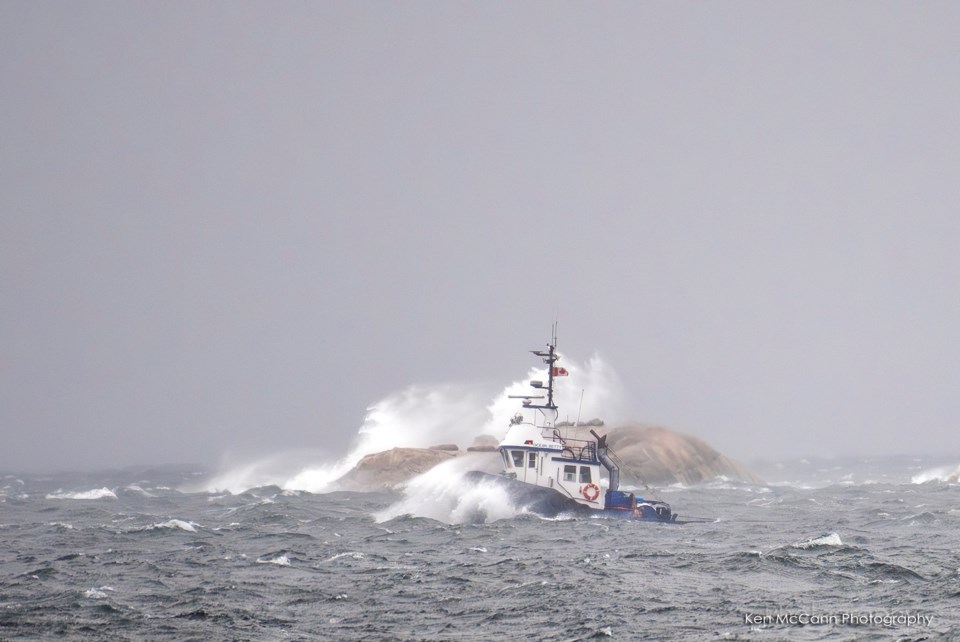Besides extreme winds, Environment Canada has added a second weather advisory this afternoon, for the Sunshine Coast — from Gibsons to Earls Cove.
Elevated ocean water levels accompanied by significant wind and waves are expected, likely exceeding “highest astronomical tide,” which, according to Fisheries and Oceans Canada, is the “highest tidal level which can be predicted to occur under average meteorological conditions and under any combination of astronomical conditions.”
These high tides are predicted to occur Wednesday morning and could cause coastal flooding due to storm surge and high tide hazards, including minor flooding near coastal areas due to waves crashing onshore. Powerful waves can also roll logs and heavy debris along beaches.
The ministry is now warning of possible flooding of low-lying areas and recommends securing loose outdoor objects and moving equipment and other assets from low-lying areas to higher ground, where possible. Clear perimeter drains, eavestroughs and gutters. Sandbags also help and can be made available through your local government.
Recognize the danger signs
If you live near a waterway, a change in water colour or rapid change in water level, especially a drop, could indicate a problem upstream. Call your local fire, police or public works department immediately if you suspect something is out of the ordinary.
If you face a threatening flood situation, park vehicles away from streams and waterways, move electrical appliances to upper floors and make sure to anchor fuel supplies. Listen to local officials if you are asked to evacuate.
In the event of flooding, some tips about what to avoid:
Steer clear of river and coastal shorelines. Keep away from river edges and shorelines. During periods of high flow, river banks may be unstable and more prone to sudden collapse. Stay away and keep young children and pets away from the banks of fast-flowing streams and flooded areas or bridges.
During a storm surge or coastal flooding, people should:
- Move away from the shoreline if you see signs of coastal flooding.
- Do not drive through flood waters.
- Do not go out on the water, as storm surges can generate strong currents.
- Do not assume it's safe to go on the water or to the shoreline if the water recedes.
- Evacuate if instructed to do so by local authorities.
Do not drive through flood water
Extensive water pooling on roads can be expected. Never attempt to drive or walk in flood water. Approximately 15 cm (six inches) of fast-moving water can knock over an adult, and 61 cm (two feet) of rushing water can carry away most vehicles, including SUVs and pickup trucks.
Landslide risk
Heavy rain may contribute to landslides and dangerous debris in creeks and waterways. Be safe and do not go to watch the rushing water. If you notice trees beginning to lean or bend near your home, or cracks developing in the hillside, consult an engineer or contact local authorities.
Coastal flooding is possible along exposed shorelines, especially in low-lying areas. Please continue to monitor alerts and forecasts issued by Environment Canada. To report severe weather, send an email to [email protected] or tweet reports using #BCStorm.
Words missing in article? Your adblocker might be preventing hyperlinked text from appearing.



